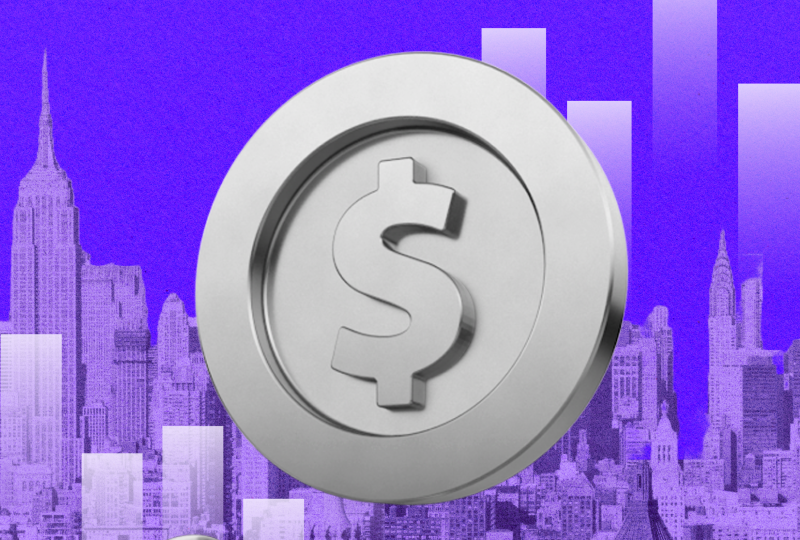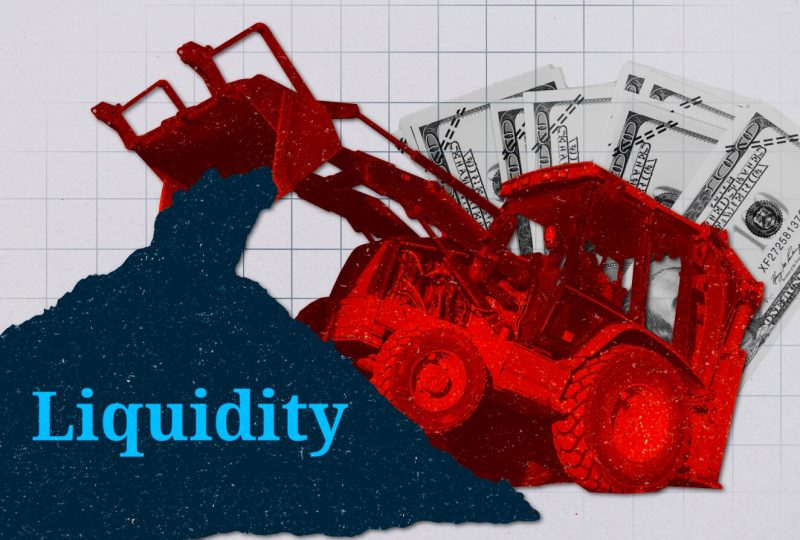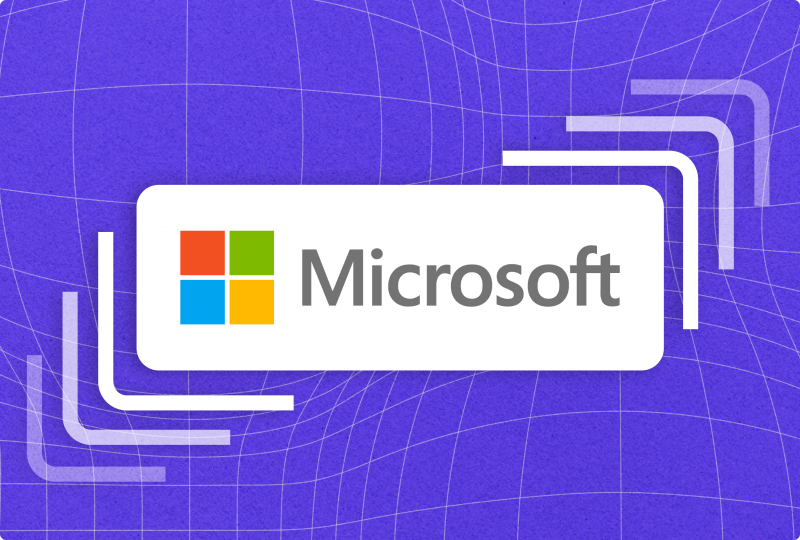What Is GameFi? — On the Intersection of Gaming and Finance
June 4, 2024
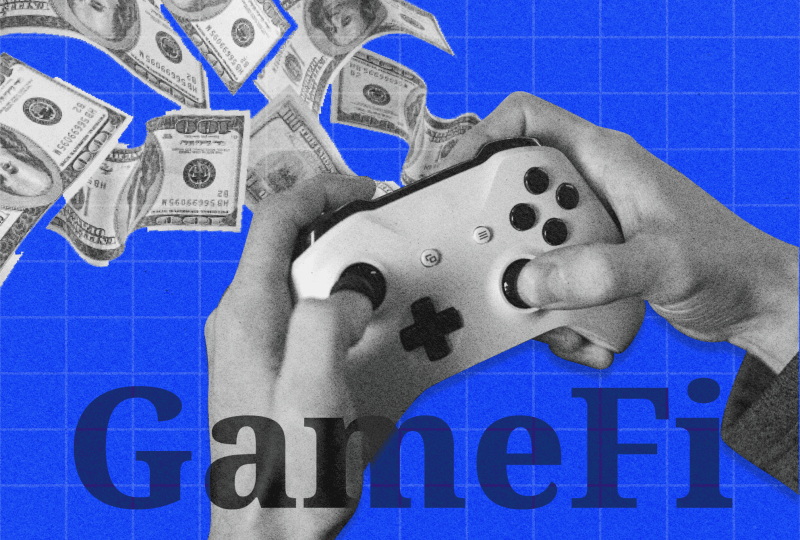
The gaming industry has long been a bastion of entertainment and escapism, captivating audiences worldwide. However, a new paradigm is emerging within the gaming industry – GameFi.
This concept blends the world of gaming with the power of decentralized finance (DeFi) and blockchain, creating an ecosystem where players can not only enjoy gameplay but also earn genuine value in the form of cryptocurrencies and non-fungible tokens (NFTs).
Key Takeaways:
- The play-to-earn model is a key feature of GameFi, which incentivizes players to engage with games and rewards them with crypto tokens.
- While GameFi presents earning opportunities, it faces market volatility, regulatory uncertainties, and security issues.
- Trends such as deeper integration with metaverses, DAOs, and advancements in gaming technology are expected to influence GameFi’s future.
What Is GameFi?
GameFi, the blending of the words “game” and “finance,” is a term that represents the integration of DeFi protocols with gamified elements. GameFi aims to blur the lines between video games and finance, allowing players to engage in the virtual economy, earn rewards, and build real-world value through gameplay mechanics.
At its core, GameFi focuses on player ownership and control. Unlike traditional video games, where publishers tightly control digital assets, Game Finance platforms use blockchain technology to give players true ownership of their in-game items, characters, and currencies. Players can freely trade, exchange, and even monetize their digital possessions, unlocking new avenues for earning and wealth creation.
The Mechanics of GameFi: Tokenization and Play-to-Earn
The core mechanics that underpin the GameFi ecosystem revolve around the tokenization of in-game assets and the implementation of play-to-earn (P2E) models. Blockchain technology, with its decentralized ledgers and smart contracts, enables the creation of unique digital tokens that represent various in-game items, characters, and currencies.
These tokenized assets, often in the form of NFTs, grant players true ownership and the ability to transact them on open marketplaces. Players can collect and curate their digital possessions and potentially profit from them by selling or trading items with other participants in the ecosystem.
The play-to-earn model is a key driver of the GameFi experience. It incentivizes players to actively engage with the game, as their in-game activities and achievements are rewarded with the platform’s native cryptocurrencies or other digital assets. These rewards can then be converted into real-world currencies, enabling players to generate income simply by playing the game they enjoy.
Fast Fact
It is believed that the term GameFi was first coined by Andre Cronje, the founder of Yearn Finance, in a tweet back in 2020. However, the exact origin of the term is uncertain, as some sources suggest it was first used as early as 2019.
Popular GameFi Projects
The GameFi crypto ecosystem is teeming with a diverse array of projects. Let’s delve into some of the prominent examples:
Axie Infinity
Axie Infinity is one of the most well-known and successful GameFi games to date. It revolves around the collection and breeding of Axies, unique digital creatures inspired by the axolotl. These Axies are represented as NFTs, and players can buy, sell, breed, and battle with them on the Ethereum blockchain, with the most expensive Axies fetching hundreds of ETH.
The game’s play-to-earn model has been a major draw for players worldwide, allowing them to earn Smooth Love Potion (SLP) tokens during gameplay that can be traded for real money. The project uses its own sidechain called Ronin to minimize transaction delays. The native ecosystem token, AXS, is used for multiple purposes within the game, including governance, staking, etc.
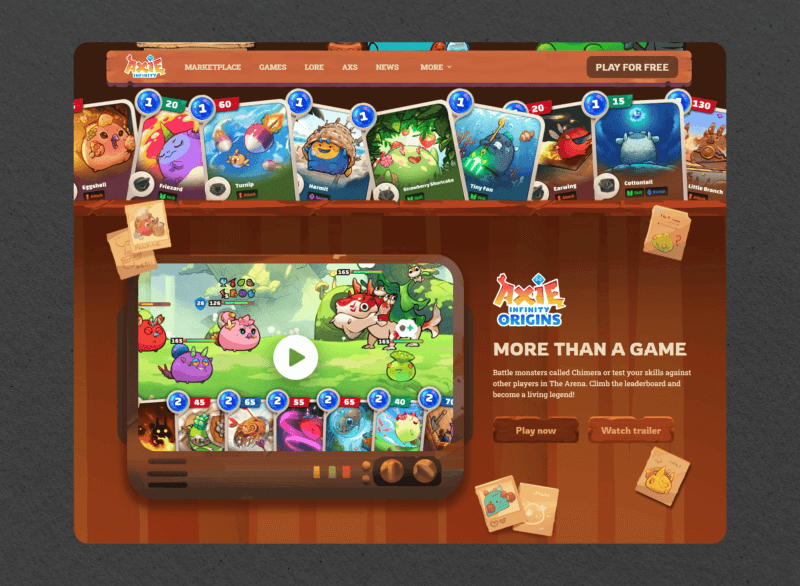
Gala Games
Gala Games is a GameFi platform launched in 2019 that boasts a unique player-driven economy where players genuinely own in-game assets as NFTs. Platforms support a variety of nodes, each of which maintains and secures the network differently. Node operators are rewarded with GALA tokens and exclusive NFTs.
Gala Games offers a wide range of blockchain-based P2E games, including “Town Star” and “Spider Tanks.” Each game integrates NFT elements, providing players with unique gameplay experiences. The platform encourages independent game development, allowing creators to use its blockchain infrastructure to create and launch new games.

Illuvium
Illuvium is an upcoming blockchain game that has gained a lot of attention even before its launch in 2022. It aims to combine the best aspects of traditional role-playing games with NFTs and DeFi elements. Players will be able to collect, train, trade, and battle with unique creatures called Illuvials on the Ethereum network. These creatures are represented as NFTs and can have various classes and affinities, each with its unique abilities.
The game also features a DAO governance model driven by the ILV token, which allows players to stake their tokens for rewards and participate in decision-making processes. Illuvium will leverage Immutable X’s Layer-2 scaling solution, which promises to overcome common blockchain gaming market challenges and provide a seamless experience for players.
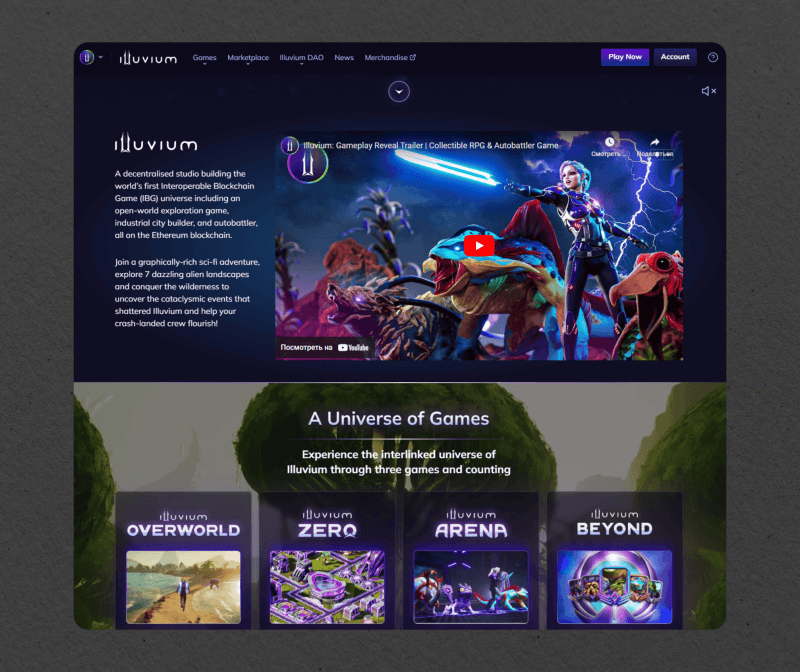
The Sandbox
The Sandbox is a virtual world and blockchain gaming platform that allows users to create, trade, and monetize their virtual experiences using the SAND token. Through its various tools like VoxEdit and Game Maker, users can design and build their creations without needing coding skills. The metaverse offers a marketplace for trading in-game assets with SAND tokens, including LAND – digital real estate used for game development.
The platform’s focus on user-generated content allows for endless possibilities and creativity, making it one of the most popular metaverse projects in the market. The Sandbox has already attracted significant investments and partnerships, including a collaboration with legendary gaming company Atari.
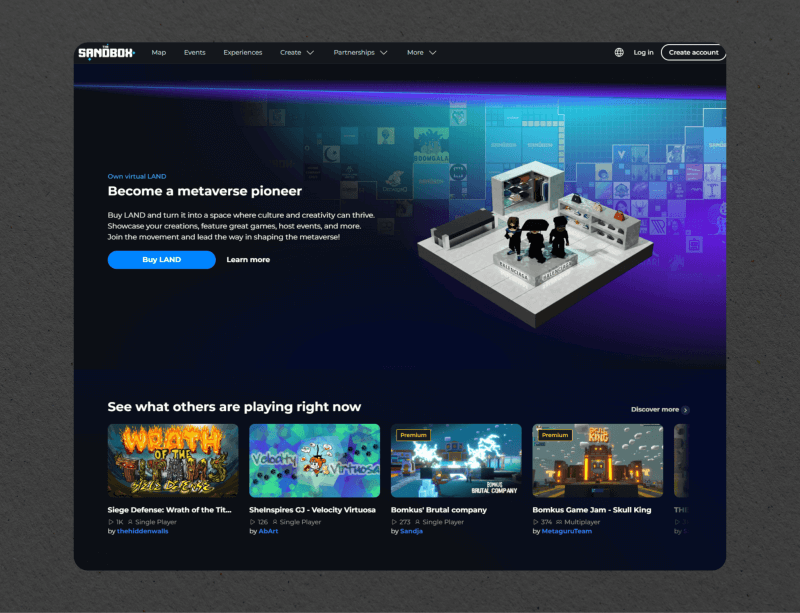
Advantages of GameFi
The rise of GameFi presents a myriad of benefits that set it apart from traditional video games:
Earning Potential and Financial Inclusion
The play-to-earn model introduced by GameFi presents an opportunity for players to generate real-world income through their gaming activities. By earning cryptocurrencies or selling their in-game assets, players can supplement their incomes or even make a living solely through their participation in the GameFi ecosystem. This feature is particularly empowering for individuals in regions with limited economic opportunities, fostering financial inclusion and new avenues for wealth creation.
Asset Ownership and Sovereignty
One of the most transformative aspects of GameFi is the concept of player ownership over digital assets. Unlike traditional gaming where in-game items and currencies are controlled by the publisher, GameFi platforms leverage blockchain technology to grant players true ownership over their digital possessions.
This approach encourages players to freely trade, sell, or even use their assets outside the game’s ecosystem, unlocking new avenues for value creation and financial opportunities.
Incentivised Engagement and Retention
The integration of financial incentives within the gaming experience can serve as a powerful motivator for players. GameFi platforms can drive increased engagement, retention, and a sense of investment in the game’s success by offering the potential to earn rewards and build valuable digital assets for players. The mutually beneficial relationship between players and game developers can lead to the creation of thriving, self-sustaining in-game economies.

Challenges and Considerations of GameFi
While the potential of GameFi is undeniable, the ecosystem also faces a range of challenges as of today, which should be noted:
Volatility
The value of GameFi tokens and in-game assets can be highly volatile, subject to the same market forces that impact the broader cryptocurrency and NFT markets. Volatility can introduce financial risks for players, who may face the potential for significant losses if the value of their digital assets plummets.
Regulatory Uncertainty
The crypto industry and DeFi have raised regulatory concerns in different countries. Governments and policymakers are grappling with how to effectively regulate the blockchain and GameFi industry, particularly in areas such as taxation, consumer protection, and anti-money laundering measures.
Security Issues
Security concerns are also a significant barrier for potential investors in GameFi. The unique landscape of GameFi, with its high stakes and inherent vulnerabilities, means that any security breach can result in substantial losses and potentially spell the demise of an entire project.
These issues are multifaceted, encompassing both on-chain and off-chain vulnerabilities. On-chain risks include potential problems with ERC-20 tokens, NFTs, cross-chain bridges, and DAOs. Off-chain security problems include reliance on centralized servers, which are susceptible to attacks, and potential tampering with off-chain NFT metadata. High-profile incidents such as the Axie Infinity hack and the Dragoma rug pull serve as reminders of the urgent need for enhanced security measures in the GameFi sector.
Lack of Liquidity
Liquidity, a critical aspect of any financial market, is also a major investment barrier for the GameFi sector. Tokens and assets tied to less popular play-to-earn games or platforms can have limited liquidity, making it difficult for investors to quickly buy or sell their positions. This lack of liquidity can lead to hesitation from potential investors, as they fear not being able to exit their positions when desired, potentially resulting in financial losses.
User Experience and Accessibility
The current user experience of GameFi platforms can also be a barrier to mainstream adoption. Navigating the complexities of blockchain wallets, token management, and in-game mechanics can be daunting for casual gamers. GameFi platforms need to prioritize user-friendly interfaces, intuitive onboarding processes, and educational resources to lower the barrier to entry if developers want to attract a wider audience.
Furthermore, many blockchain games lack diverse gameplay mechanics beyond repetitive tasks, which can deter players from seeking engaging experiences. To truly thrive, GameFi must offer seamless and accessible user experiences that rival mainstream gaming platforms.
Project Sustainability
The lack of clear revenue models can be a deterrent for investors seeking well-defined paths to returns. In the GameFi space, some projects struggle to showcase how they will generate sustainable income beyond the initial token sale, leaving investors questioning their potential profitability.
Moreover, maintaining a healthy and sustainable in-game economy is a delicate balance for GameFi platforms. Developers must carefully design their tokenomics and incentive structures to foster long-term player engagement and economic stability. Issues such as inflationary pressures, fair reward distribution, and the over-creation of in-game assets should not be overlooked.
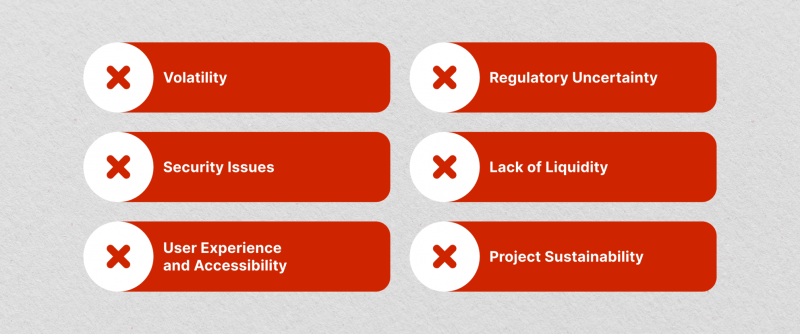
Trends in GameFi
As the GameFi ecosystem continues to evolve, several trends and emerging opportunities are shaping its future trajectory.
Metaverse Integration
The rise of the metaverse, a shared virtual space where users can interact, socialize, and engage in various activities, presents a natural synergy with GameFi. Platforms are exploring ways to integrate their gaming experiences within metaverse environments, allowing players to transition between the virtual world and the play-to-earn economy seamlessly.
Decentralized Autonomous Organizations (DAOs)
The principles of decentralization inherent in GameFi make it a natural fit for DAOs. These community-driven, self-governing entities can play a pivotal role in shaping the future of GameFi, empowering players to have a direct voice in the decision-making processes that govern the in-game economies and development roadmaps.
Interoperability and Cross-Chain Compatibility
As the GameFi landscape expands, the need for interoperability and cross-chain compatibility becomes increasingly crucial. Platforms that can seamlessly integrate and facilitate the exchange of digital assets across different blockchain networks will have a competitive advantage, enabling players to freely move their holdings and participate in a more interconnected GameFi ecosystem.
Advancements in Gaming Technology
The rapid evolution of gaming technology, including advancements in graphics, immersive experiences, and cloud-based gaming, will further enhance the appeal and capabilities of GameFi platforms. As these technological innovations are combined with the DeFi principles, the GameFi experience is poised to become more engaging, visually stunning, and financially rewarding for players.
Final Thoughts
Despite the initial in sector activity in 2021, the GameFi market has made a strong comeback in the second half of 2023, according to CoinGecko’s report. Blockchain-based games such as Axie Infinity and Farmers Wolds have seen record transaction volumes towards the end of 2023. The resurgence in popularity has also led to an increase in overall activity within the GameFi market.
The success of new GameFi projects and the market’s recovery have caught the attention of investors and developers alike. GameFi is expected to grow and attract even more attention, with several games due to be released in 2024.
GameFi represents a fundamental shift in the gaming industry. It has created a new player economy where players can earn tangible rewards for their efforts in-game. While the notion of replacing traditional work with gaming may be a stretch, the potential for earning real-world value through digital assets is undeniable.
FAQs
How does GameFi work?
GameFi allows gamers and creators to earn cryptocurrencies and NFTs through gameplay. It operates in a decentralized ecosystem and is often hosted in virtual spaces called metaverses, offering engagement opportunities to all users.
What is the difference between GameFi and Metaverse?
GameFi is a term used to describe blockchain-based games that incorporate financial elements like earning, trading, and staking. Metaverse, on the other hand, refers to a virtual world built on blockchain technology with various decentralized applications (dApps). While GameFi focuses on gaming and finance, Metaverse goes beyond that to create immersive experiences and social interactions in a digital universe.
How many people play blockchain-based games? According to the DappRadar Games Report for 2023, blockchain games have approximately 1.1 million active users every day, making up 34% of all dApp activities. This sector’s popularity is expected to grow in 2024.
